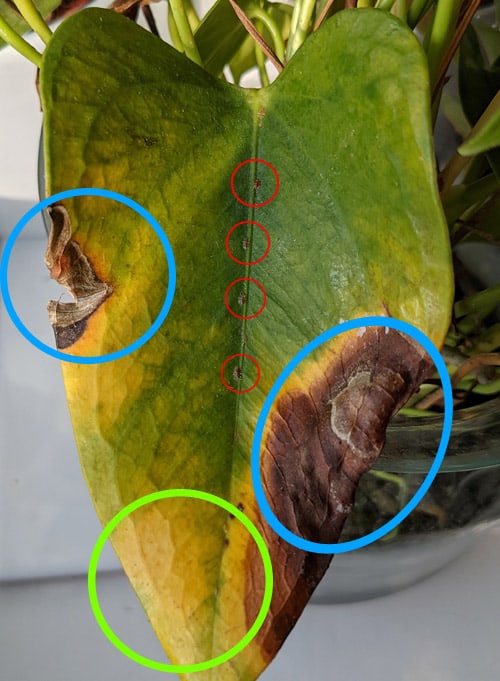

The high level of this resistance was confirmed by inoculating the plants with a bacterium strain, representative of the local population of the pathogen. In 1995 we have identified resistance in one Anthurium clone growing in a shade-house. dieffenbachiae) practically wiped out the whole crop.Īfter developing preventive measures to control the disease, we have initiated a breeding program for resistance to the pathogen. Resistance of anthurium cultivars to infection by Acidovorax anthurii, the causal agent of bacterial leaf spot disease was investigated using seven inoculation methods, four inoculum concentrations and two different plant ages towards developing a screening method for identification of disease resistance. This flower was leading the export market until 1983 when the accidental introduction of bacterial blight ( Xanthomonas campestris pv. In the French Antilles, the development of ornamental productions in the early seventies was based on anthuriums. In this prospect, cut flowers, including anthuriums, alpinias and heliconias are considered to have a considerable potential as an export commodity. And ensure you quarantine any new plants for a while to ensure that they are uninfected.Ornamentals are of growing importance in the crop diversification policy of most Caribbean countries. Rubbing alcohol could be utilized as a sanitizing agent. Sanitize all containers and tools just before use. Make certain that there is no standing water in places you grow your anthurium. You may easily spread blight when they're moist.įinally, appropriate sterilization is vital. Next be cautious when walking in between your plants, especially if they're wet.

Be careful not to let it touch other plants as it's transported away.

Second, immediately get rid of any plants that show signs of disease. Capture a web page as it appears now for use as a trusted citation in the future. This will reduce the spread of blight from an infected leaf to an uninfected one. Watering with drip irrigation will decrease the amount of water that gets on the foliage. The very first is changing how they are watered. When raising these plants in close proximity there are various things it is possible to do to decrease the transmission of blight.

But if you are growing a big quantity of them, you might not have a choice but to keep them nearer together. So if you are growing these plants within your garden you want them spaced as far apart as possible. Water can transport Xanthomonas from an infected plant to an uninfected plant.Ĭertainly if you keep the plants close together, there is a higher possibility of infection than if you keep them far apart. So if you are growing andrecola you most likely don't need to worry about blight, but if you are raising andreanum, you may well wish to read on.Īppropriate anthurium care is important to hold this harmful menace at bay. Bacterial blight is common in anthurium dorayaki plants. Here are some common issues to watch out for when you grow anthurium dorayaki plants: Bacterial Blight.
#BACTERIAL BLIGHT APPEARS ON ANTHURIUM FREE#
Normally, andreanum are susceptible to this illness, whilst andrecola, which are andreanum amnicola hybrids are resistant against it. Anthurium dorayaki plants are easy to care for, don’t you think Well, the plants are not free from problems, as many people have reported some common problems while growing theirs. When an anthurium plant is contaminated it will ultimately die, if you don't manage to clear away infected leaves or flowers before the illness has progressed. A number of, but not all anthurium blossoms are vunerable to a disease known as Xanthomonas blight.


 0 kommentar(er)
0 kommentar(er)
